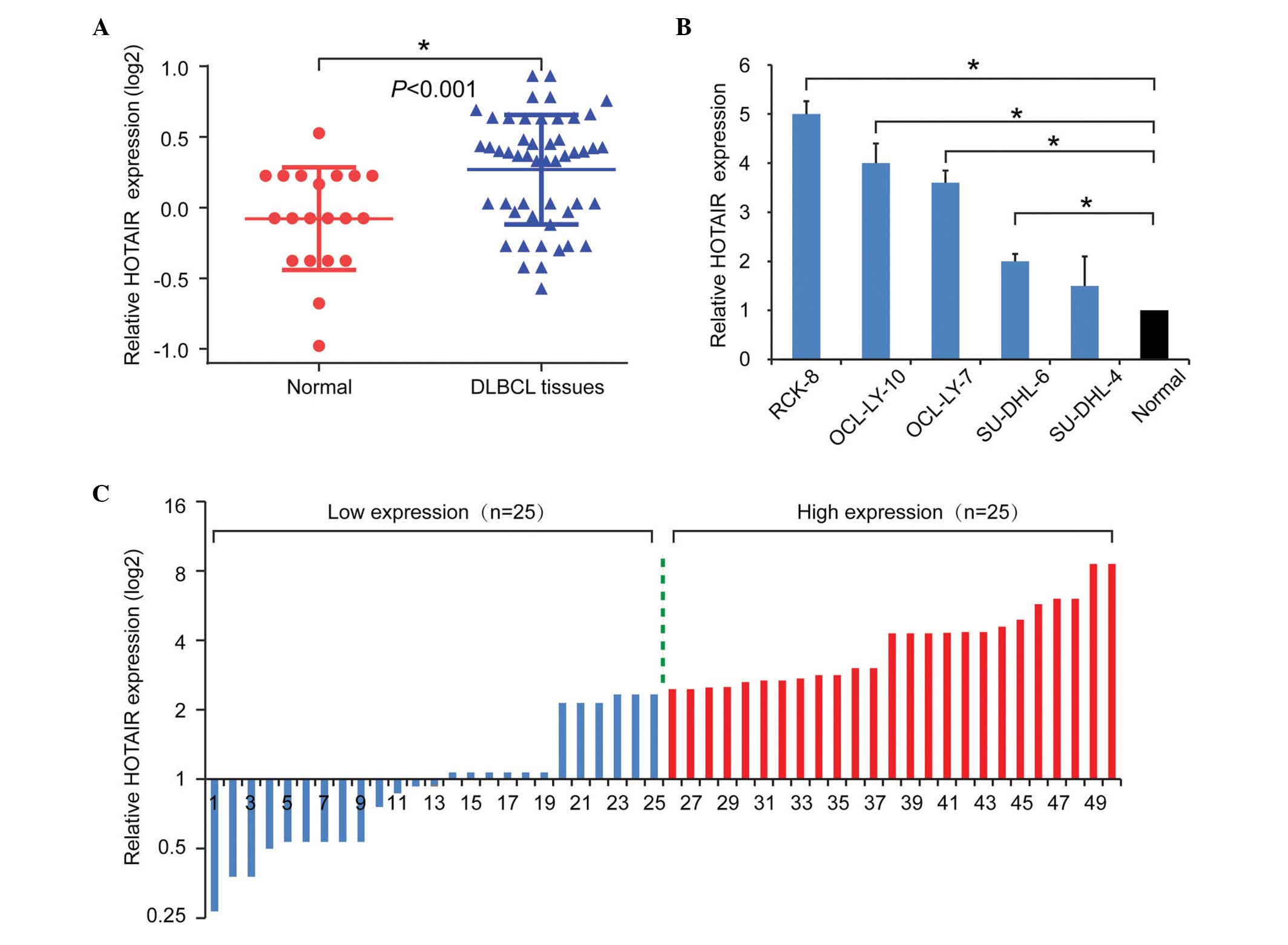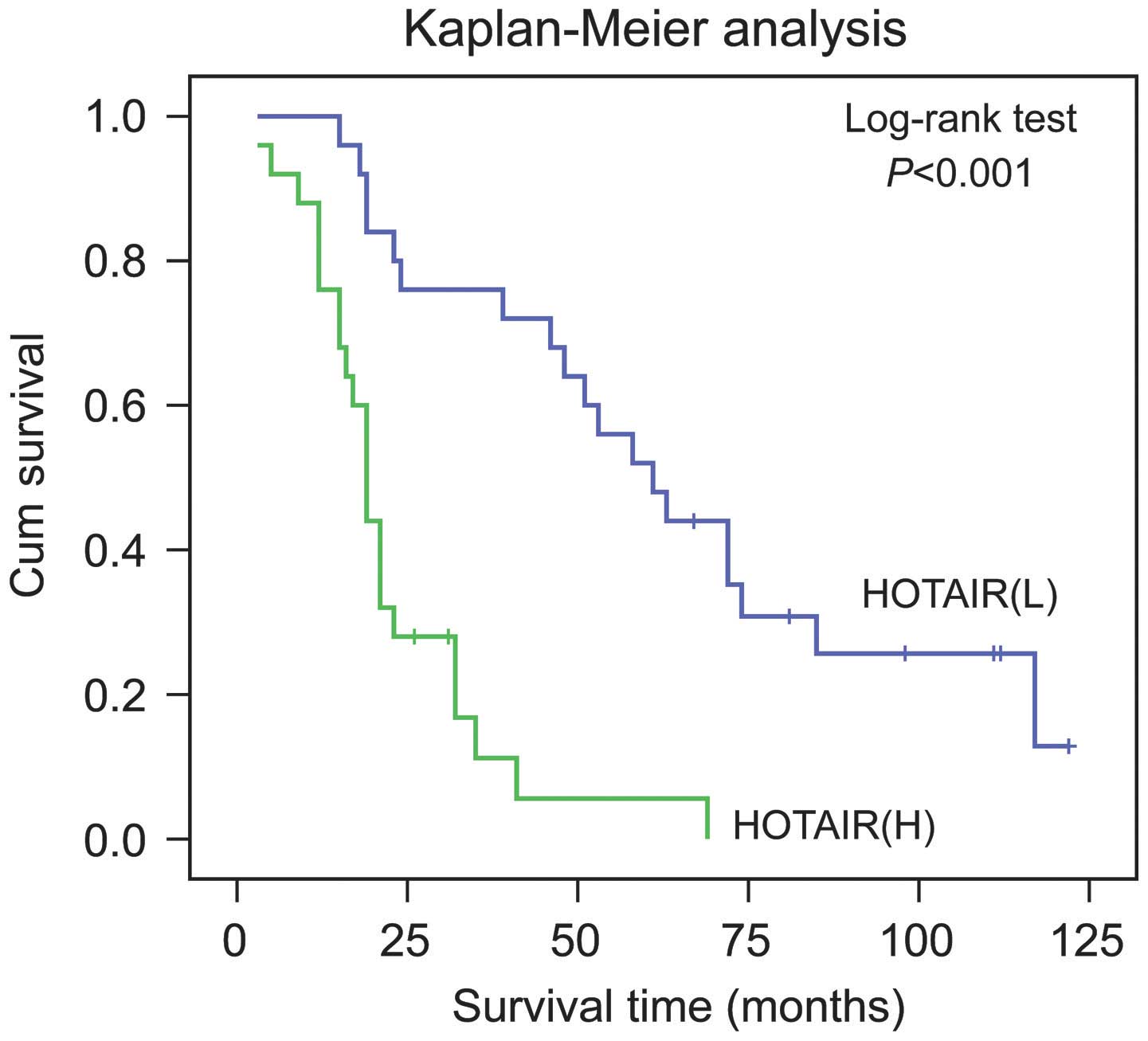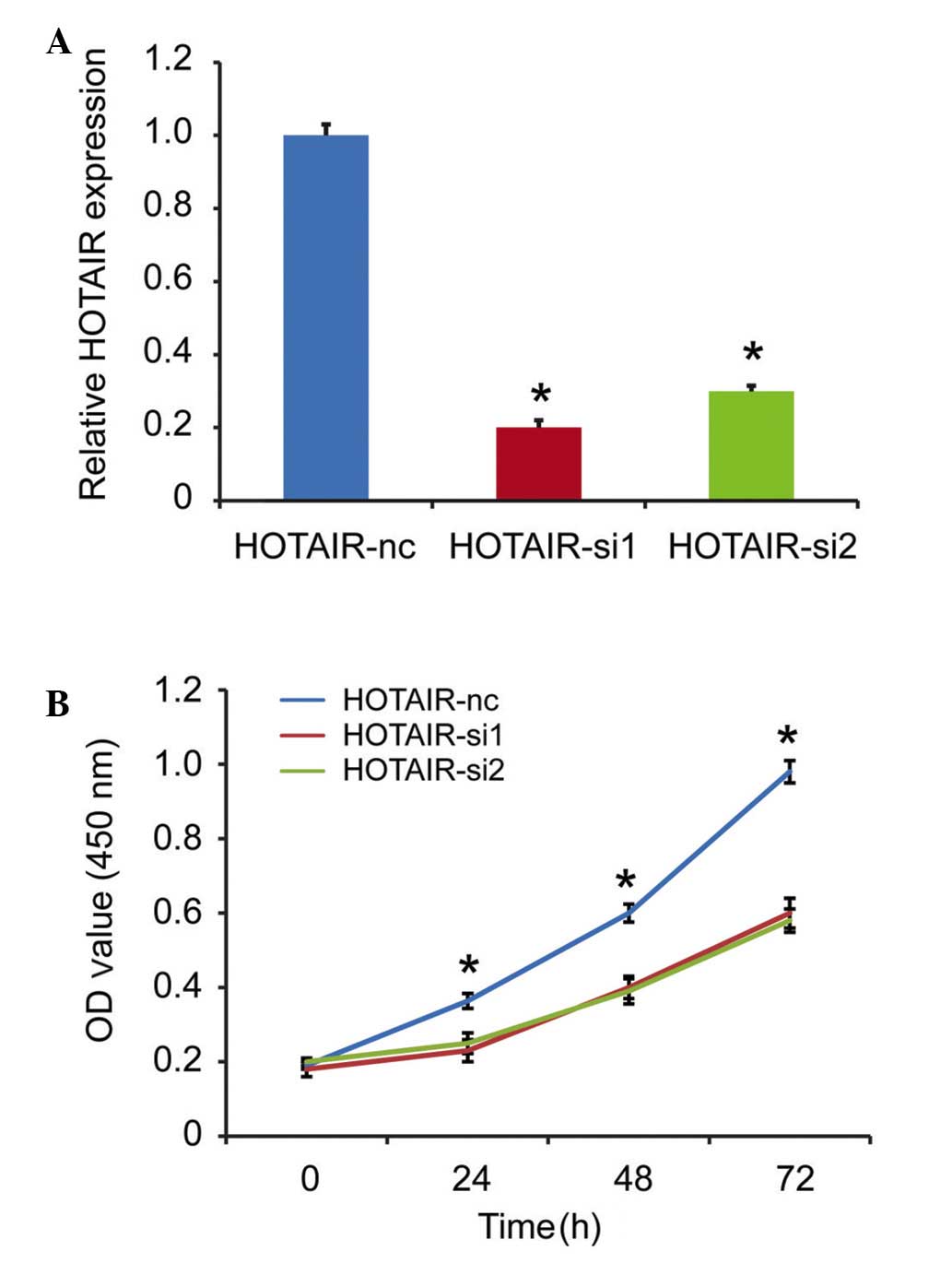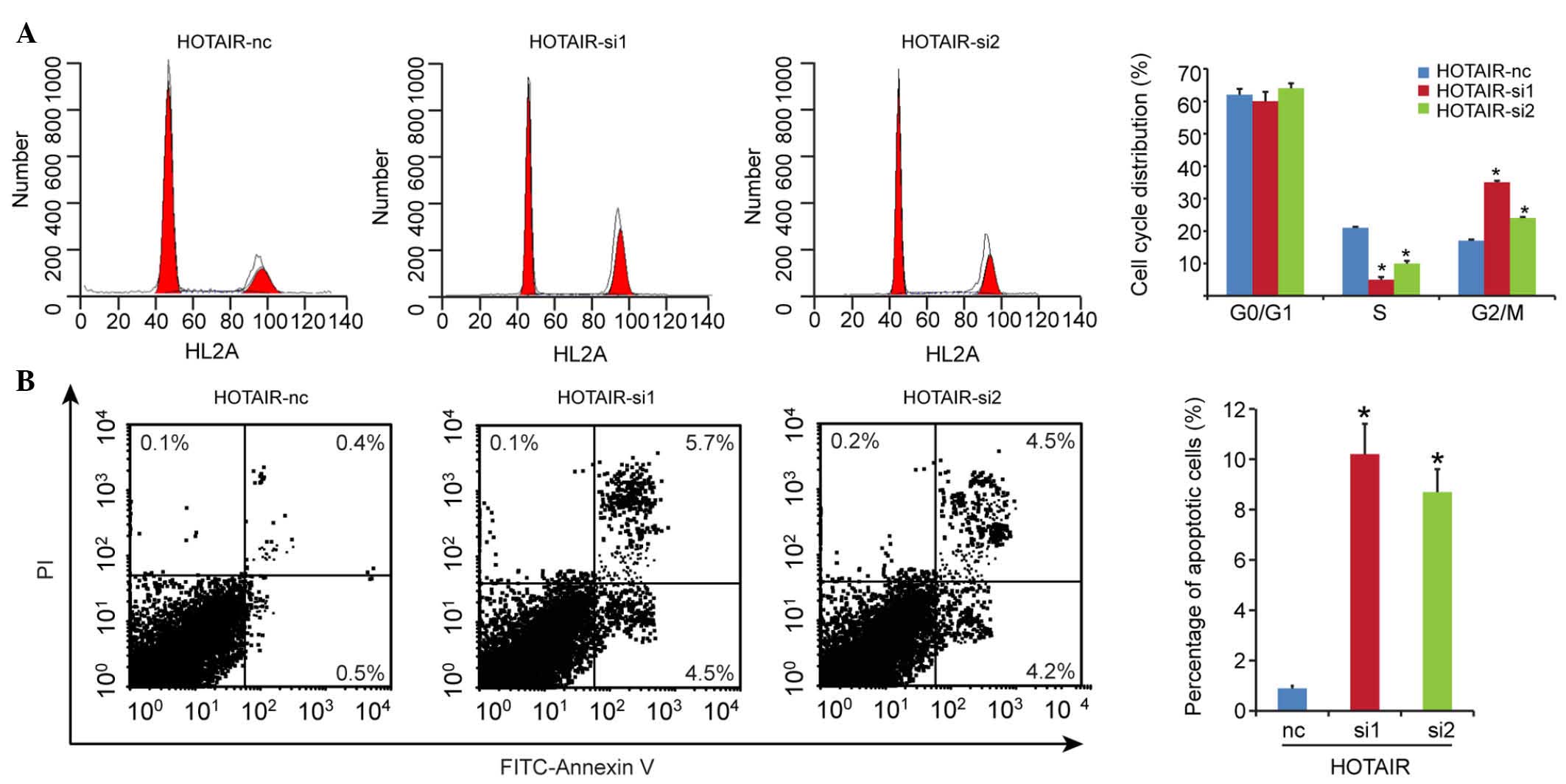Elevated RNA expression of long non‑coding HOTAIR promotes cell proliferation and predicts a poor prognosis in patients with diffuse large B cell lymphoma
- Authors:
- Published online on: April 26, 2016 https://doi.org/10.3892/mmr.2016.5190
- Pages: 5125-5131
-
Copyright: © Yan et al. This is an open access article distributed under the terms of Creative Commons Attribution License.
Metrics: Total
Views: 0 (Spandidos Publications: | PMC Statistics: )
Total PDF Downloads: 0 (Spandidos Publications: | PMC Statistics: )
Abstract
Diffuse large B cell lymphoma (DLBCL) is one of the most common types of malignancy worldwide. The lack of clear symptoms and early detection make it difficult to diagnose at an early stage, leading to poor prognosis of the patients. Long non‑coding RNAs (lncRNAs) have come into focus for their important regulatory roles in fundamental biological processes, particularly in cancer initiation, development and progression. The aim of the present study was to investigate the expression of lncRNA Hox transcript antisense intergenic RNA (HOTAIR) in a cohort of patients with DLBCL to assess its clinical value and biological function in DLBCL. The reverse transcription‑polymerase chain reaction was used to detect HOTAIR expression levels and cells were transfected with small interfering RNA to compare cell proliferation, cell cycle progression and apoptosis. Western blotting was also conducted to detect possible signaling pathways. It was first found that the expression levels of HOTAIR were upregulated in DLBCL tumor tissues and cell lines, compared with normal tissues and cells. In addition, HOTAIR was significantly correlated with tumor size, clinical stage, B symptoms and International Prognostic Index scores; and higher expression levels of HOTAIR were correlated with improved prognosis. Univariate and multivariate analyses verified that HOTAIR was a key independent predictive factor for DLBCL prognosis. Furthermore, it was revealed that the knockdown of the expression of HOTAIR led to growth inhibition, cell cycle arrest and apoptosis in vitro, possibly through the phosphoinositide 3‑kinase/AKT/nuclear factor‑κB pathway. These results suggested that HOTAIR may be regarded as a novel indicator of poor prognosis, and may serve as a potential target for gene therapy in the treatment of DLBCL.














